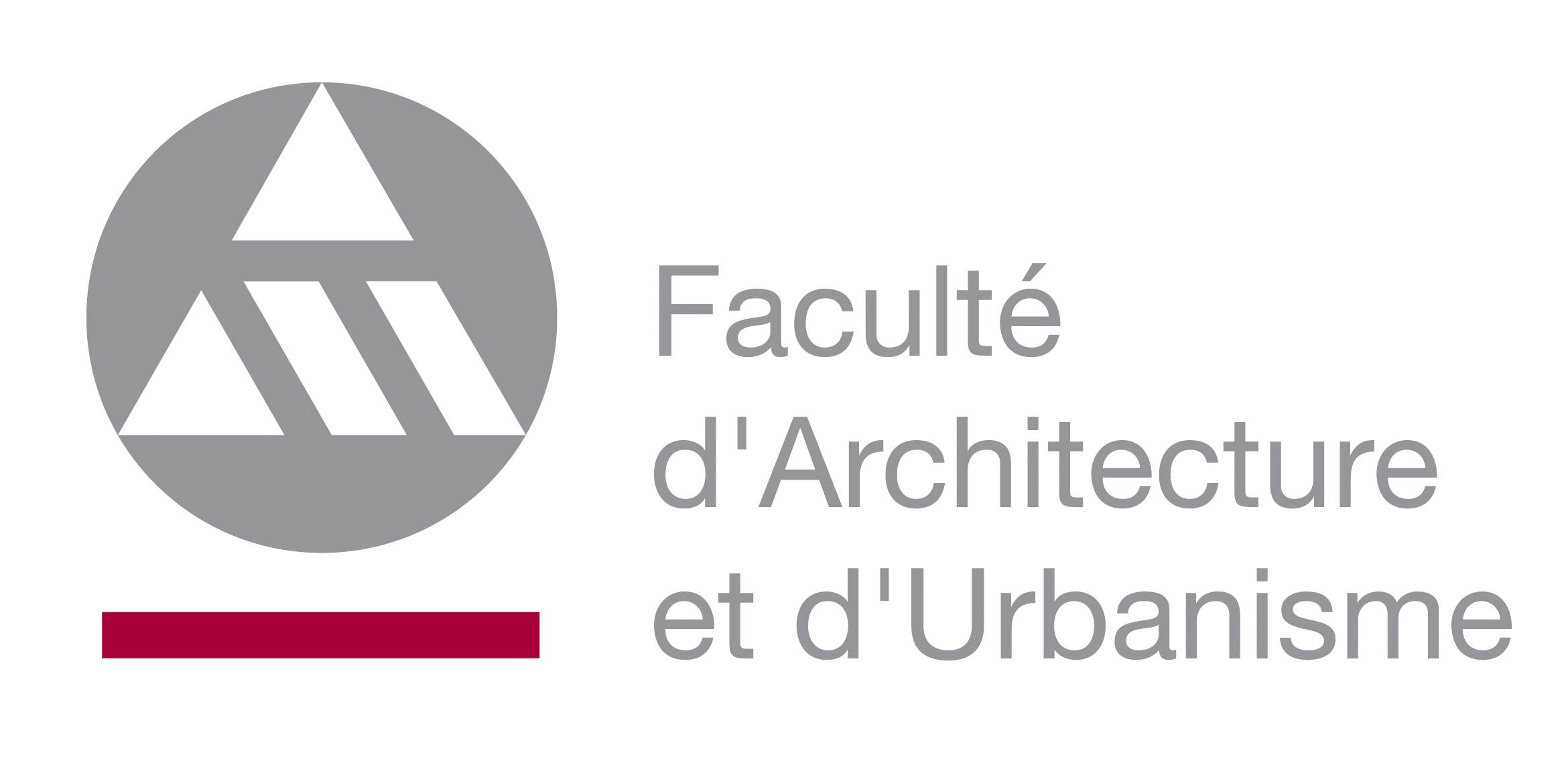 | Study programme 2021-2022 | Français | |
 | History and theory of architecture and urban planning I | ||
Programme component of Bachelor's in Architecture à la Faculty of Architecture and Urban Planning |
| Code | Type | Head of UE | Department’s contact details | Teacher(s) |
|---|---|---|---|---|
| UA-B1-ARCHIT-018-M | Compulsory UE | DEPREZ Anne | A530 - Service d'Architecture et Société |
|
| Language of instruction | Language of assessment | HT(*) | HTPE(*) | HTPS(*) | HR(*) | HD(*) | Credits | Weighting | Term |
|---|---|---|---|---|---|---|---|---|---|
| Français | 18 | 6 | 0 | 6 | 0 | 2 | 2.00 | 1st term |
| AA Code | Teaching Activity (AA) | HT(*) | HTPE(*) | HTPS(*) | HR(*) | HD(*) | Term | Weighting |
|---|---|---|---|---|---|---|---|---|
| A-ARSO-001 | History of architecture - From rural areas to vernacular architecture | 18 | 6 | 0 | 6 | 0 | Q1 | 100.00% |
| Programme component |
|---|
Objectives of Programme's Learning Outcomes
- Instruct an architectural issue
- Build an architectural culture based on theoretical and critical knowledge and personal reading
- Coordinate the various disciplines related to architecture and urban planning transversely
- Contextualise their approach to architecture
- Develop a spatial response
- Master the means of oral, written and graphic expression
- Develop a project methodology integrating the various constraints related to the architectural discipline
- Implement an identified spatial response
- Adopt an applied scientific approach
- Adapt their structural, technical and formal choices according to the principles and values of project.
- Interact with all actors
- Integrate the different expectations of stakeholders related to architecture and urban planning
- Make choices
- Demonstrate ethical values
Learning Outcomes of UE
Beyond a study of the great monuments of history, the introductory course to the history of architecture and town planning addresses the rural and vernacular territory at the origin of its appearance. Considered to be construction "without an architect", it occupies 95% of architectural production. Its symbolism has its roots in the utilitarian, a truth often forgotten or despised. Its interest goes beyond the simple object of everyday life: "the lack of beauty does not detract from its historical significance, although aesthetic success adds a dimension to its testimony" (Luc-Francis GENICOT).
The study of rural and vernacular architecture from ancient times to contemporary times aims by a global and sensitive approach on the built environment to modify the behavior of the student in his perception of the environment, to make him know its local architectural culture and build its historical perspective on the ground.
For the future generation of architects, the question of ecology will extend to the entire built environment to be recycled (renovate, rehabilitate, reassign, transform). Intervening in an existing heritage enriches its perception and gives rise to discoveries which structure and organize its interpretation of a built place: the program, the circulation, the structure, the symbolism, etc.
Content of UE
Ancient rock architecture
Ancient and medieval rural architecture
Medieval vernacular architecture
Modern and contemporary vernacular architecture
Prior Experience
Antiquity history courses in the secondary school
Type of Assessment for UE in Q1
- Written examination
Q1 UE Assessment Comments
Examination writes according to the visual documents
Type of Assessment for UE in Q3
- Written examination
Q3 UE Assessment Comments
Examination writes according to the visual documents
Type of Resit Assessment for UE in Q1 (BAB1)
- Written examination
Q1 UE Resit Assessment Comments (BAB1)
Examen écrit d'après les documents visuels
Type of Teaching Activity/Activities
| AA | Type of Teaching Activity/Activities |
|---|---|
| A-ARSO-001 |
|
Mode of delivery
| AA | Mode of delivery |
|---|---|
| A-ARSO-001 |
|
Required Reading
| AA | |
|---|---|
| A-ARSO-001 |
Required Learning Resources/Tools
| AA | Required Learning Resources/Tools |
|---|---|
| A-ARSO-001 | Brief bibliography on the local territory: Symbols and ritual practices in the traditional peasant house (Architecture and traditional life collection), Hervé Fillipetti and Janine Trotereau, Berger-Levrault, 1978 Our farms tell their stories. by Vic Goedseels & Luc Vanhaute, Pierre Mardaga, 1983. Rural Architecture of Wallonia (Coll. By province), Center for the History of Architecture and Building at UCL, Pierre Mardaga, 1983-1996 The rural heritage of Wallonia: the peasant house (vol. 1 and 2), Luc-Francis Génicot, Patricia Butil, Sabine De Jonghe, Bernadette Lozet, Philippe Weber, Crédit Communal de Belgique, 2007. In the footsteps of the old "countries" of Wallonia, Frédéric Marchesani, Institut du patrimoine wallon, 2013. |
Recommended Reading
| AA | |
|---|---|
| A-ARSO-001 |
Recommended Learning Resources/Tools
| AA | Recommended Learning Resources/Tools |
|---|---|
| A-ARSO-001 | - Perouse de Montclos, J.-M., Architecture, méthode et vocabulaire (principes d'analyse scientifique), éd. du Patrimoine (Paris), 2000. - Coll., La grammaire des formes et des styles, Antiquité, Office du Livre, Fribourg, 1981. |
Other Recommended Reading
| AA | Other Recommended Reading |
|---|---|
| A-ARSO-001 | - Norberg-Schulz CH., La signification dans l'architecture occidentale, Mardaga, 1977. |
Grade Deferrals of AAs from one year to the next
| AA | Grade Deferrals of AAs from one year to the next |
|---|---|
| A-ARSO-001 | Unauthorized |